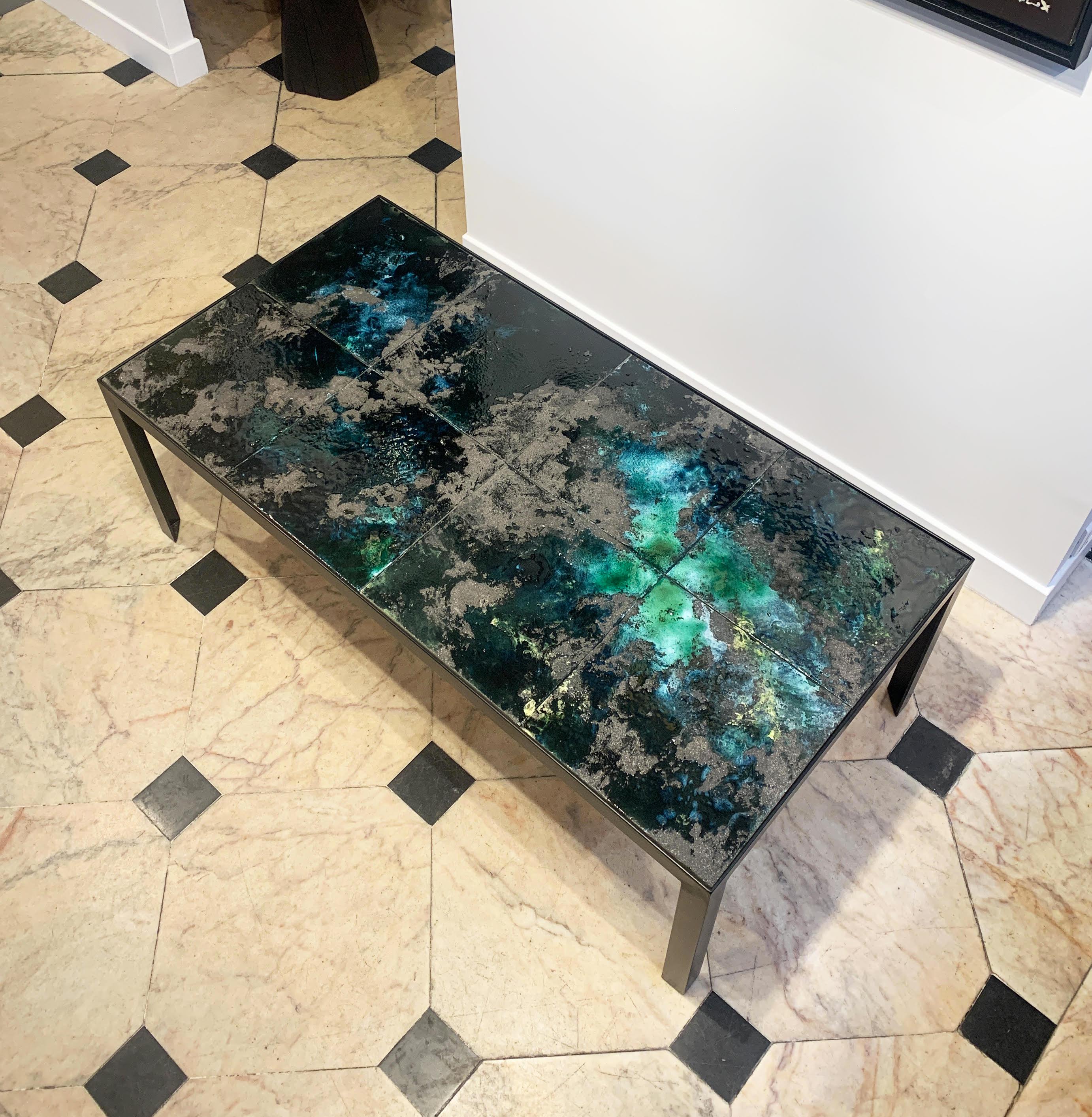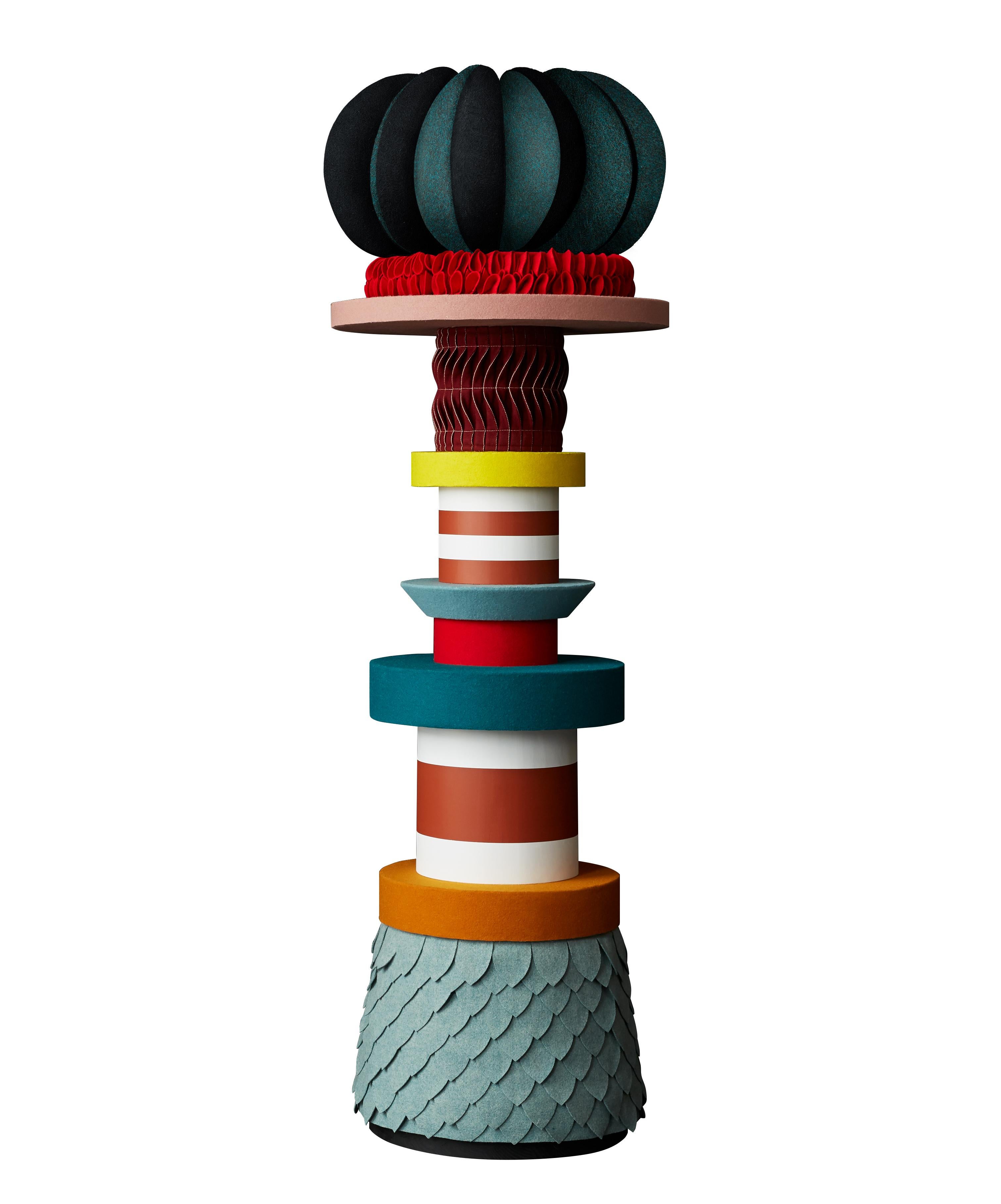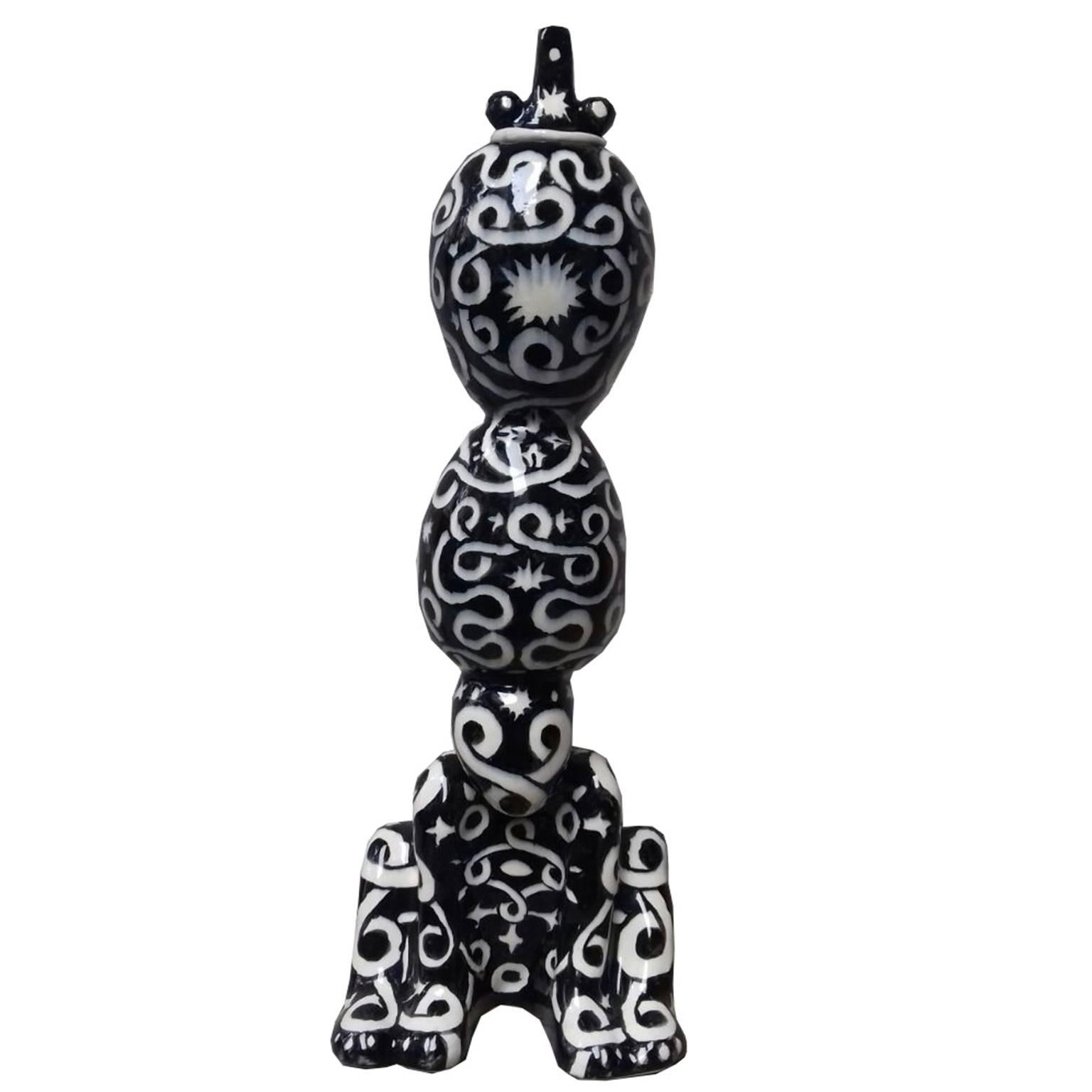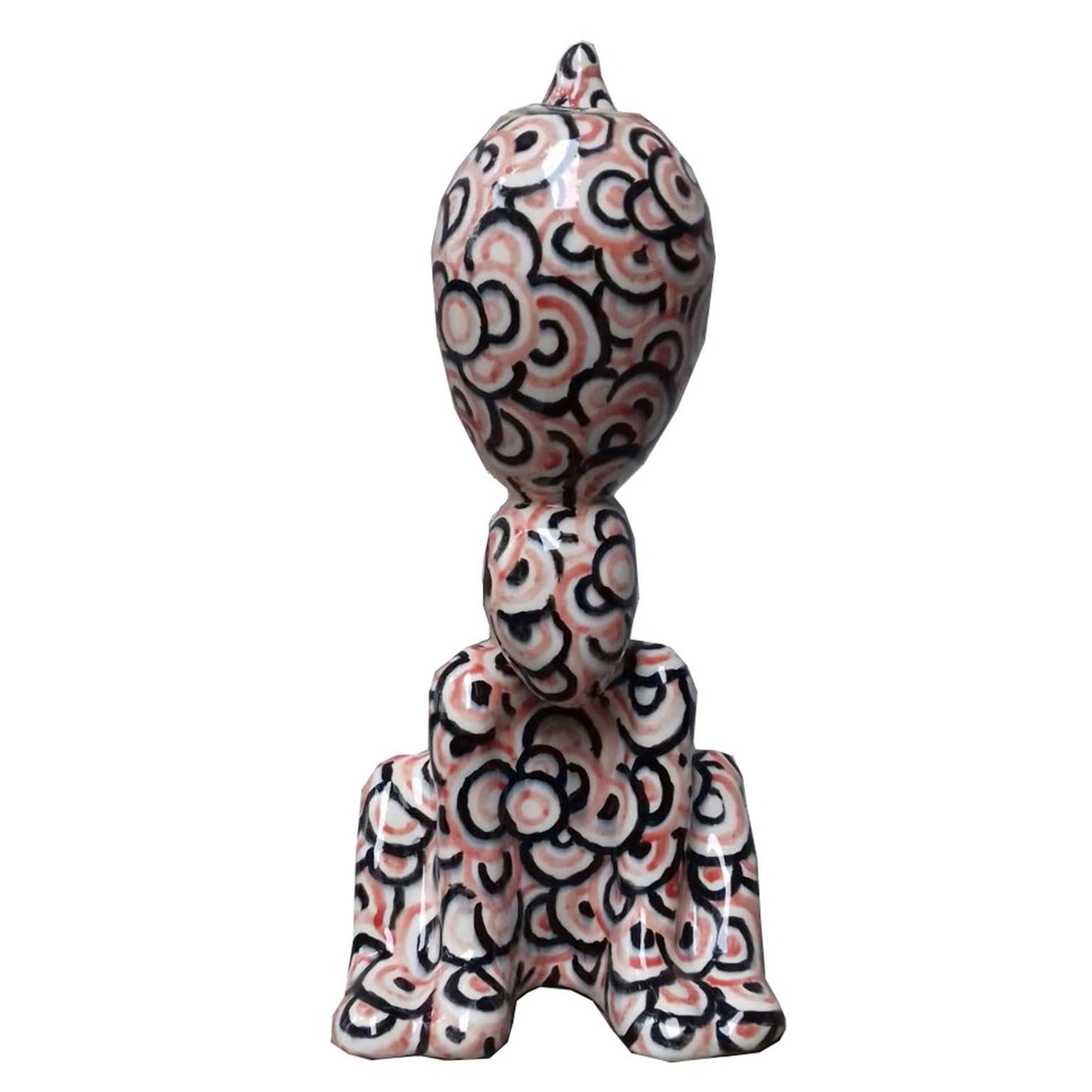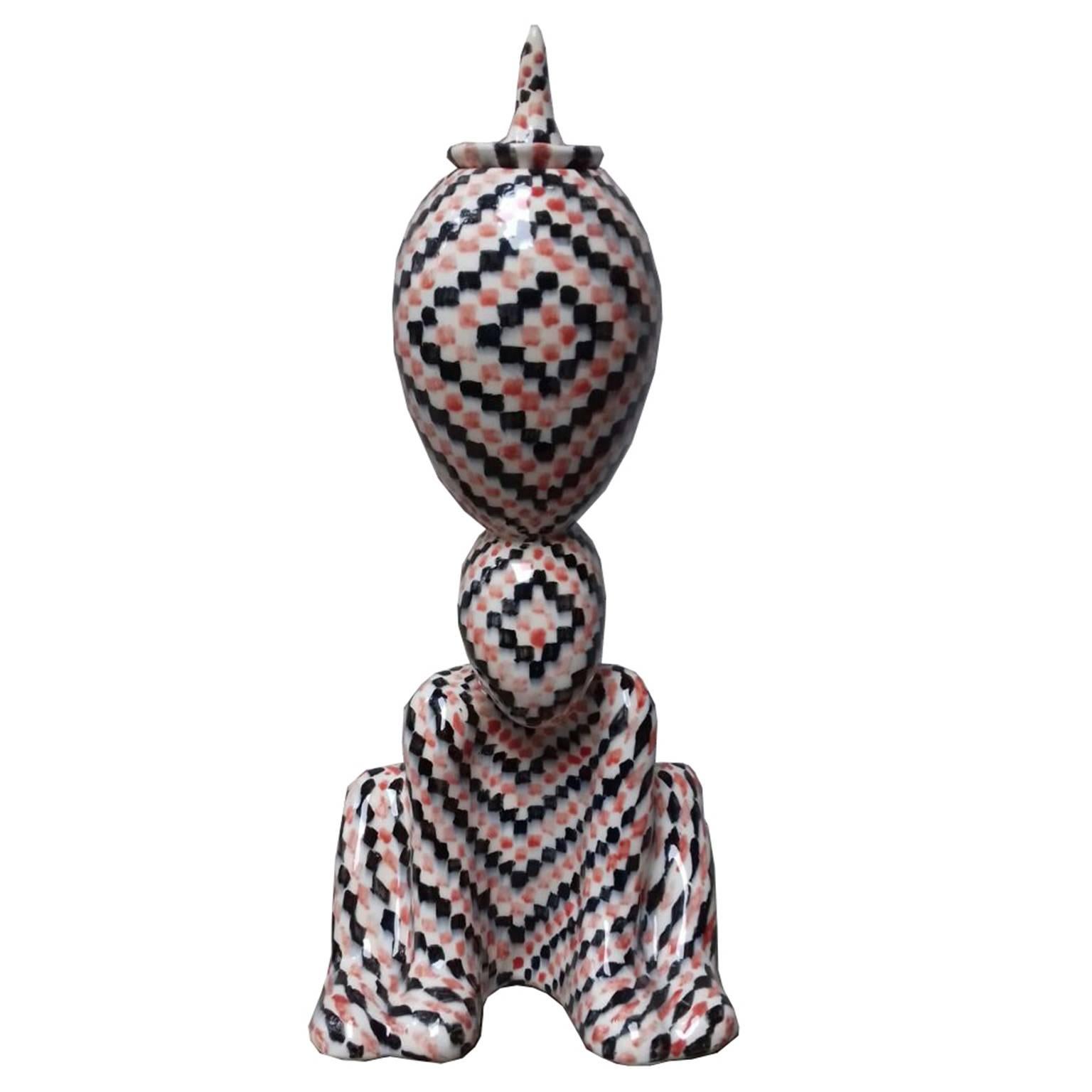Items Similar to Rare Antique Enamel Singer Sewing Machine Sign - Hebrew
Want more images or videos?
Request additional images or videos from the seller
1 of 6
UnknownRare Antique Enamel Singer Sewing Machine Sign - Hebrewcirca 1920
circa 1920
About the Item
Rare antique enamel Vintage Singer Sewing Machine advertisement Sign in Hebrew or Yiddish. Please see photos for condition. Rare early Jewish advertising memorbilia
This early twentieth century metal sign is an advertisement by the Singer Manufacturing Company (now called The Singer Company) for Singer Sewing Machines. Although Isaac Merritt Singer, the company’s founder, did not invent the sewing machine, his innovative design dramatically improved the capabilities of existing models. Possessing both technical expertise as well as a flair for business, Singer was the first to look beyond the commercial market and see tremendous opportunity – as yet untapped – selling sewing machines directly to households.
Singer’s inspired vision made it possible for millions of people, including immigrants on the Lower East Side, to buy their own sewing machines. By the 1850s, intrigued by the potential of mass production – a new technique then used to manufacture firearms – he adopted the same methods to mass-produce sewing machines. Production costs dropped significantly, enabling Singer to cut his machine’s sticker price from $100 to $10. Striving to make sewing machines even more affordable to average families, Singer’s company was also the first to offer an installment payment plan, allowing customers with limited income to buy now and pay back over time.
For many immigrants on the Lower East Side, affordable sewing machines presented an opportunity to earn a better living. By the turn of the century, more than half of the workers on the Lower East Side worked in the garment industry. By 1910, 70% of the nation’s women’s clothing and 40% of the men’s was produced in New York City. Many immigrants set up garment shops inside their tenement apartments and a Singer Sewing Machine was an invaluable investment. Although hand stitching was still demanded for certain kinds of detail work, it was impossible to compete with the speed of a sewing machine for less painstaking work. An experienced seamstress could easily sew 40 stitches per minute by hand, but at 900 stitches per minute, a skilled sewing machine operator was capable of working nearly 23 times faster.
From the Museum at Eldridge street
This metal sign advertised the sewing machine to Jewish clientele in Yiddish. The red square-like shape is the Yiddish letter samech and makes the “s” sound. Notice the same letter on the bottom of the sign where the name “Singer” is written in Yiddish characters. The top of the sign reads mechonos tefira, Yiddish for sewing machines.
- Creation Year:circa 1920
- Dimensions:Height: 38 in (96.52 cm)Width: 26 in (66.04 cm)
- Medium:
- Period:
- Condition:please see photos.
- Gallery Location:Surfside, FL
- Reference Number:1stDibs: LU38210796122
About the Seller
4.9
Platinum Seller
These expertly vetted sellers are 1stDibs' most experienced sellers and are rated highest by our customers.
Established in 1995
1stDibs seller since 2014
1,548 sales on 1stDibs
Typical response time: 1 hour
- ShippingRetrieving quote...Ships From: Surfside, FL
- Return PolicyA return for this item may be initiated within 3 days of delivery.
More From This SellerView All
- Ceramic Plate by Master Art Forger David Stein after Pablo Picasso VallaurisLocated in Surfside, FLApres Pablo Picasso (bears a pseudo signature recto) Hand signed David Stein, dated 1979 verso. Figural painted porcelain or ceramic serving dish, oval form. Dimensions: 18" X 14 David Stein (born Henri Haddad, 1935, Alexandria, Egypt – died 1999, Bordeaux, France) was an artist (notorious art forger) who, until 1966, had been frequently sentenced for theft by the French courts before becoming an art forger and art dealer with 15 aliases. Stein often copied paintings in the style of the masters. For example, he studied Marc Chagall, Matisse, Braque, Paul Klee, Joan Miró, Pablo Picasso, Jean Cocteau and Rouault, in order to copy their color scheme and inspirations. In 1967 Marc Chagall notified authorities of forgeries of his work hanging in a New York gallery, and Stein was arrested. Art dealers refused to cooperate with the prosecution because it would have incriminated them and made their expertise in the art field questionable. Some art collectors refused to give up their paintings as evidence. Stein was convicted of six counts of art forgery and grand larceny. During his prison term, Joseph Stone, the judge who arrested him, brought him to his office to paint. He remained a good friend of the Stein family long after Stein completed his jail sentence. In 1989 he discovered that Stein never stopped making forgeries. After Stein had served his prison term in the United States, he was deported to France where he served another term. Prison authorities allowed him to make further paintings, although now using his own name. In 1969 a London gallery sold some of these paintings. After Stein was released, he returned to painting, this time selling his paintings under his own name to put a mask on his real activities. The book Three Picasso's Before Breakfast (Mémoirs of an Art Forger's Wife) by Anne Marie Stein as told to Georges Carpozi Jr (Hawthorn Book Inc) was written by David's life partner Anne-Marie about their experiences in the art world. In the mid 1980s director Gil Cates gave his agent Arthur Axelman at William Morris a copy of the book which had been written without Stein's involvement. Axelman set out to find Stein and after several years he located him in Manhattan. Stein became an Axelman client and friend. While deals at HBO and ABC did not lead to production of a film, Axelman introduced Stein to Keith Carradine and Alan Rudolph, director of the movie "The Moderns" with ultimately starred John Lone, Géraldine Chaplin, Keith Carradine and Linda Fiorentino. The film was set in the Paris of the '20s although filmed in Montreal. Stein appeared in the film as an art critic and provided all of the art. A minor concern was a scene where a painting in the style of Matisse and Modigliani was to be burned on camera and a Modigliani destroyed by knife. No one cared to destroy any of Stein's copies, "Just good for the camera" say Stein. but a William Morris assistant for agent Axelman suggested making large format copies of the works to be destroyed. Stein refused and during the scene actor John Lone destroyed the Paintings. Stein was living in France after his troubles with the US immigration who had told him to leave US territory in 1988. He met the French photo...Category
1970s Modern Figurative Sculptures
MaterialsEnamel
- Italian Surrealist Colorful Metal Enamel Plaque Painting Wall Hanging Art LuigiLocated in Surfside, FLBiomorphic Surrealism. Signed Luigi, Enamel on metal (probably copper). Mounted to a plexi or acrylic purple mounting. I am assuming it is Italian as it is signed Luigi but it might ...Category
20th Century Surrealist More Art
MaterialsEnamel
- Architect Olabuenaga Vintage Cloisonne Enamel Art Necklace Acme studios NecktieLocated in Surfside, FLWorn like a bolo tie around the neck. This is new old stock vintage Jewelry from the legendary Acme Studio collection, which created many revolutionary jewelry items. It was handmad...Category
20th Century Pop Art More Art
MaterialsMetal, Enamel
- Vintage Chicago Architect Stanley Tigerman Cloisonne Enamel Art Necklace AcmeLocated in Surfside, FLThis is new old stock vintage Jewelry from the legendary Acme Studio collection, which created many revolutionary jewelry items. It was handmade in the 1980s using the intricate cloisonné process, an ancient technique for decorating metal; hence any imperfections within the colors are to be expected and inherent which makes it unique and one-of-a-kind. This piece is worn around the neck, like a bolo tie. The Memphis Designers for Acme collection debuted in 1986, at the opening of the Memphis/Milano exhibition at the Cooper-Hewitt Museum in New York City. The entire collection is in the permanent collection of the Groninger Collection in The Netherlands and is represented in other museum collections worldwide including the Metropolitan Museum in New york city. In 1981 Ettore Sottsass formed a design collaborative name Memphis Design. The Memphis Design Group drew inspiration from such movements as Art Deco and Pop Art producing jewelry, furniture, lighting and fabrics from 1981 to 1988. The rare designs by members including Nathalie du Pasquier, Andrea Branzi, Martine Bedin, Matteo Thun and Peter Shire are often characterized by zany colors and asymmetrical shapes. The group designed many postmodern furniture, fabrics, ceramics, glass, and metal objects until 1987. The name "Memphis" came from Bob Dylan's Stuck Inside of Mobile with the Memphis Blues Again, which was playing during the group's inaugural meeting. Inspired by art deco, art nouveau, and pop art, the group created many bold, colorful, geometric styles that departed from the rigid and dark trend during the 1970s. From 1985 to 1992, Acme founders Adrian Olabuenaga and Leslie Bailey produced more than 100 different earrings, brooches, and necklaces by design titans like Ettore Sottsass, Joanna Grawunder, Martine Bedin, Matteo Thun, Alessandro Mendini, and George Sowden, Nathalie Du Pasquier, Marco Zanini, as well as architects Alessandro Mendini, Stanley Tigerman...Category
1980s Pop Art More Art
MaterialsMetal, Enamel
- Large Hand Painted Abstract Ceramic Platter Stamped Madoura Plein Feu BrutalistLocated in Surfside, FLLarge Madoura Pottery Ceramic Platter Stamped "MADOURA PLEIN FEU" This is not marked Picasso. It is an early piece. i am uncertain who the artist is. It app...Category
Mid-20th Century Modern Abstract Sculptures
MaterialsEnamel
- Mod 1970's Israeli Judaica Folk Art Jerusalem View Enamel on Copper PaintingLocated in Surfside, FLThis is a masterfully executed wall hanging enamel on copper painting of Jerusalem. it is signed in Hebrew. Israel has had a Vibrant Folk Art, Naive art scene for a long time now art...Category
20th Century Folk Art Landscape Paintings
MaterialsCopper, Enamel
You May Also Like
- Quiet PleaseBy John MarksburyLocated in Saint Louis, MOQuiet Please was developed through an intuitive process of layering and expressive mark-making. Marksbury’s paintings explore ideas of time and space, the fantastic and mystical, sym...Category
2010s Contemporary Abstract Paintings
MaterialsEnamel
- Tabl'eauLocated in Paris, IDFBruno Desplanques (Born in 1966, France) Tabl'eau Enamelled lava stone H. 60 cm x L. 120 cm 2021Category
21st Century and Contemporary Contemporary More Art
MaterialsStone, Enamel
- QueenLocated in WINDSOR, AU4 pieces available from an edition of 8Category
2010s Contemporary More Art
MaterialsEnamel
- Serie: Serpentinata TremendaBy Pablo VigilLocated in Cuernavaca, MorelosGlazed ceramic sculpture Emerging artist. He develops his work in an encrypted, symbolic and baroque language; everything seems to come from inner worlds that implode and explode in ...Category
2010s Contemporary Figurative Sculptures
MaterialsEnamel
- Serie: Serpentinata TremendaBy Pablo VigilLocated in Cuernavaca, MorelosGlazed ceramic sculpture Emerging artist. He develops his work in an encrypted, symbolic and baroque language; everything seems to come from inner worlds that implode and explode in ...Category
2010s Contemporary Figurative Sculptures
MaterialsEnamel
- Serie: Serpentinata TremendaBy Pablo VigilLocated in Cuernavaca, MorelosGlazed ceramic sculpture Emerging artist. He develops his work in an encrypted, symbolic and baroque language; everything seems to come from inner worlds that implode and explode in ...Category
2010s Contemporary Figurative Sculptures
MaterialsEnamel

